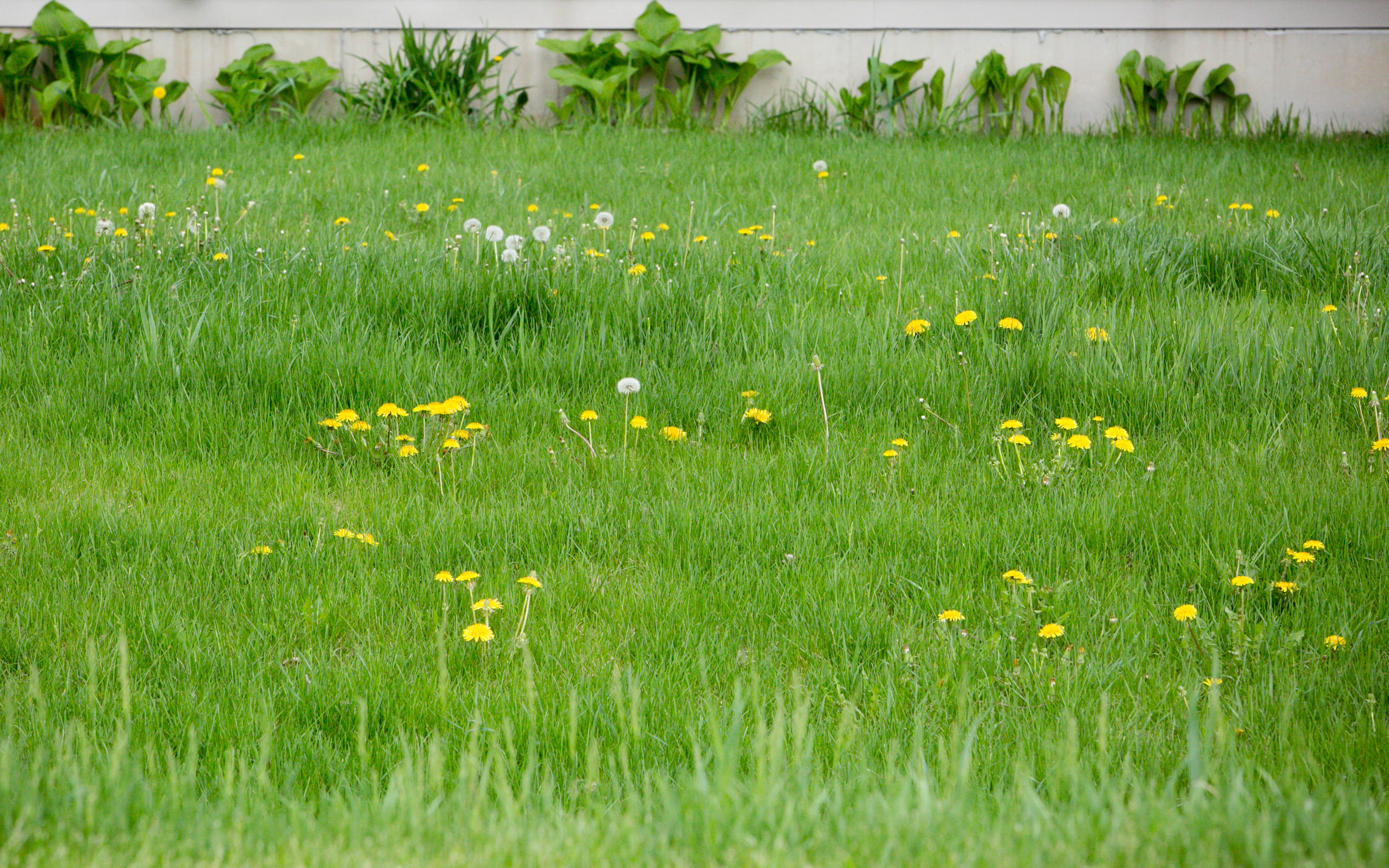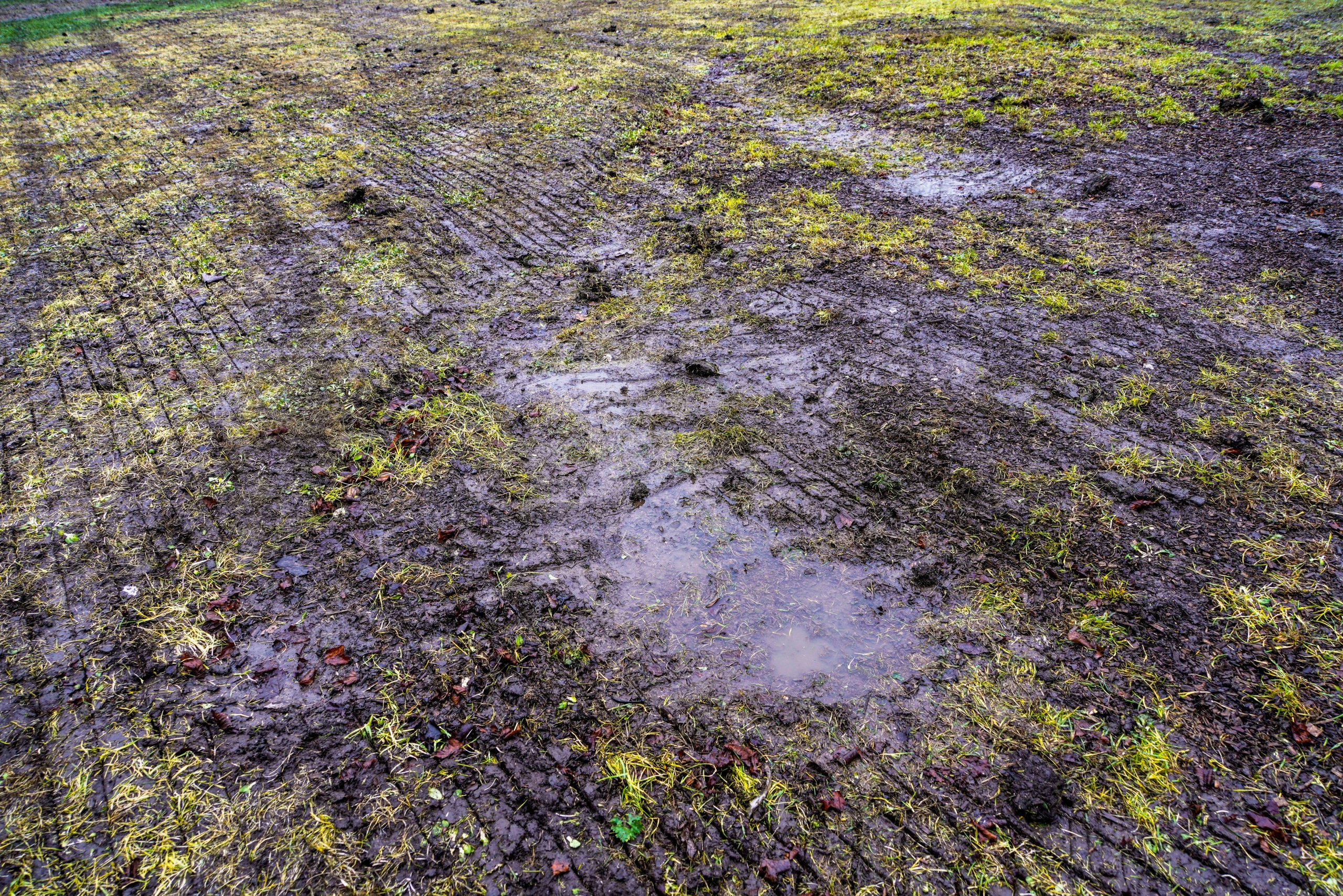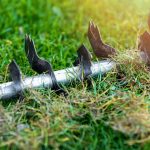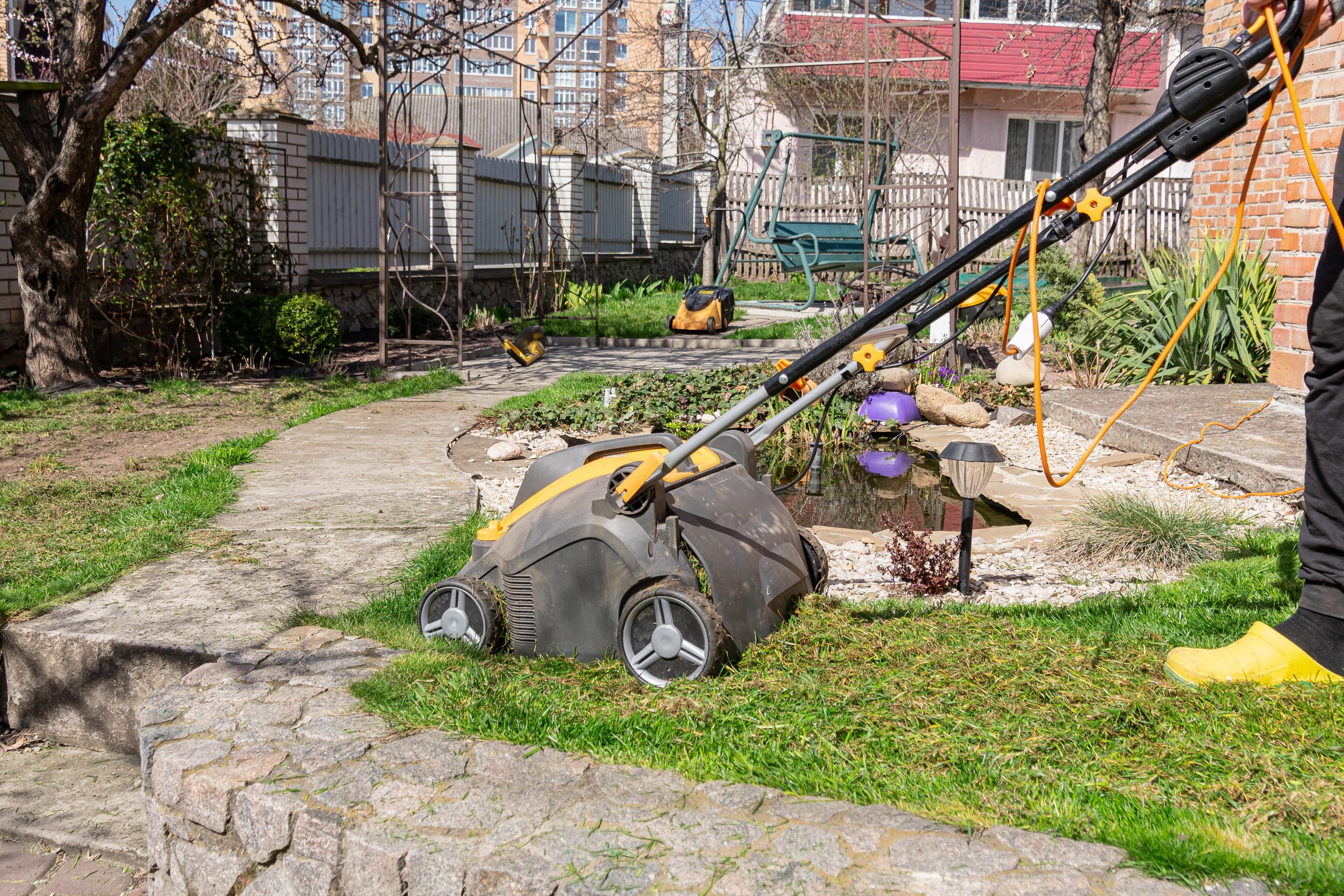Scarifying the lawn means removing most of the thatch from the top of your grass. A little bit of thatch—maybe a quarter of an inch—is not a bad thing, but when it gets too thick, it can actually harm your lawn. Usually, scarification is done once a year in the fall or spring when it’s cooler and drier.
Thatch is essentially shoots and runners and dead grass roots; in other words, organic material. If there’s too much of it, it prevents air, water, and nutrients from seeping into the soil, which is why it’s a good idea to remove it and allow your plants to grow, breathe, and thrive.
Scarifying a lawn can help to strengthen the grass which will in turn push out weed growth. If perennial weeds are present and the roots are not completely removed, a weed problem could be made worse by the scarification process.
How Scarifying Can Help to Disrupt Weed Growth
One of the things scarification does is remove dead grass, moss, and other materials from the top of the lawn so that the soil is better aerated, which naturally improves the lawn because it is better able to absorb water and nutrients. When you’re scarifying your lawn, it has to be done the right way. If you’re careful and don’t dig too deep into the soil, scarification can remove all of the dead organic material and kill the weeds as well. The perfect suggestion is to get rid of one to two inches of thatch and no more. If you eliminate more than that, it’s possible you’ll end up with more and not fewer weeds.
To make sure you disrupt the weed growth, you have to choose the right scarification method. This is where the type of scarifier you choose comes into play. For smaller lawns, a manual scarifier can work because it works much like a rake does; for medium-sized lawns, an electric scarifier works well because it is sturdy. Both of these options are low-maintenance and quiet. For larger lawns, consider buying a gas-powered dethatcher. Keep in mind that scarifiers can consist of blades or tines. As a general rule, the more tines or blades you have, the better.

Some Scarifiers are Better Designed to Lift Out Growing Weeds
By now, you know there are four main types of scarifiers: manual, electric, gas, and ones with tines versus blades. When it comes to lifting out growing weeds, bladed scarifiers and those that are gas-powered do best. This is because scarifiers with blades do best when scarifying large pieces of lawn at a time, and the gas-powered scarifiers work best for both weeding and aerating purposes. You should also make sure the blades or tines are made out of the right materials, the best ones being aluminum, tempered steel, or stainless steel.
You might also consider using a verticutter, which is similar to a scarifier but has vertical blades and doesn’t dig quite as deep as some scarifiers do. Again, you don’t want to dig too deep into the soil or it could activate the growth of your weeds instead of getting rid of them. This is because if you dig too deep, it allows for better aeration and therefore better growth, and this includes the growth of the weeds that are there.
Scarifying Can Help Strengthen the Grass, Which Will Prevent Weeds
Scarifying strengthens the grass, and if you’re wondering why, it’s best to start by learning what thatch is. Over time, thatch develops on your lawn, which consists of dead and living stems, roots, and leaves that accumulate in between the soil and the grass that is growing on top. Thatch can be good or bad for your lawn, depending on the situation. If the layer of thatch is only 1/2 to 3/4 inch thick, it can protect the lawn from too much dead grass and decaying materials. On the other hand, if the thatch is too thick, it can block air, water, and nutrients from getting into the soil.
To avoid this and to make sure just the right amount of thatch is removed, you need a scarifier. Again, try to remove one to two inches of dead organic material, which usually includes moss, so that the soil gets enough nutrients and water to help the grass grow thick and healthy. Scarifying the grass once a year is the perfect way to remove just the right amount of thatch so that your grass can continue to grow right.
Annual Weeds vs. Perennial Weeds
Annual weeds grow from seeds but after about a year, they die. More often than not, they are a part of your lawn thanks to the small animals (like squirrels) and birds that carry the seeds there.
Several types of annual weeds exist, including:
- Pigweed
- Nettle
- Crabgrass
- Purple deadnettle
- Chickweed
- Bindweed
- Lamb’s quarters
In addition, there are both cool-season and warm-season annual weeds. Cool-season weeds usually sprout sometime between the fall and the spring seasons, while warm-season weeds start to grow in the spring and last throughout the growing season. That being said, warm-season weeds may start to diminish the further along you get in the growing season.
Perennial weeds are a lot harder to control than annual weeds. They are extremely hardy and can get there via seeds or roots. In fact, to demonstrate how sturdy they are, consider this: if you leave just a tiny bit of roots on the ground, these weeds can start to reproduce quickly and heartily. Before you know it, your lawn could be inundated with perennial weeds.
Some examples of this type of weed include:
- Ground ivy
- Poison ivy
- Dandelion
- Plantain
- Burdock
- Thistle
Because of the nature of perennial weeds, it is best to tend to them as quickly as possible. You also have to make sure never to till or hoe perennial weeds. Unfortunately, the best method of eliminating perennial weeds is to remove them by hand because they must be removed from the roots. If the roots aren’t completely removed they will likely remain there until the following year and could be made worse by the scarification process. A product specifically made for weed removal can also help.

How Scarifying Can Spread Weeds
In theory, scarifying your lawn gets rid of weeds, both annual and perennial. In practice, however, it doesn’t always work that way. This is because instead of removing weeds, scarifying your lawn shreds and suppresses the weeds. Especially with perennial weeds, if the weeds aren’t removed by the roots, they’ll remain where they are and your scarifier will then spread the weeds all over your lawn. This is why it is generally recommended that you remove as many of the weeds by hand before you start scarifying the lawn.
The more weeds you can remove beforehand—again, by the root—the more efficient the scarification process becomes. Otherwise, the remaining parts of the weeds will likely be spread all over your lawn by the scarifier, resulting in a bit of confusion as to why you have more weeds instead of fewer weeds afterward.
Scarification is Only One Part of Lawn Care Practice
Always keep in mind that scarification is just one part of total lawn care. Proper watering and fertilization of the lawn is also a necessity, and there are things you should do both before and after you scarify your lawn that will help the process be more successful. About three to four weeks before scarification, you’ll need to get rid of all of the weeds in your lawn. This can be done in one of several ways, but keep in mind that the more weeds you eliminate, the more successful the scarification will be. About two weeks before scarification, go ahead and mow your lawn. You should only leave about one to two inches of grass if possible.
Finally, about a week before scarification, go ahead and use a moss killer. Do this only if moss is actually present in your lawn. You’ll also want to mow again if the grass has grown above 2 inches. Ideally, you’ll want to scarify and then aerate your lawn before going any further, and fortunately, there are tools that do both. After you scarify and aerate, your lawn might look worse than before, but this is no reason for alarm. You’ll want to overseed your lawn after scarifying, and you’ll want to fertilize it as well. Then, make sure the lawn is watered very well.
Why You Should Kill Weeds Before Scarifying
We’ve already gone over this question, but the main reason you want to kill as many weeds as possible before scarifying is that if parts of the weeds are still in the soil, the scarifier can actually spread them instead of getting rid of them. If you’re going to scarify in the fall, you should eliminate the weeds in late summer, roughly five to six weeks before scarification. Pulling the weeds up by the roots—by hand—is the most effective method, and you’ll want to use a post-emergent afterward.
Remember that you should overseed after you scarify the lawn to increase the odds of a lush and healthy lawn afterward. Overseeding should never be done unless you remove and kill all of your weeds beforehand. Even if a few weeds are still left, the scarification can spread them around and can even affect how successful your overseeding is afterward.







